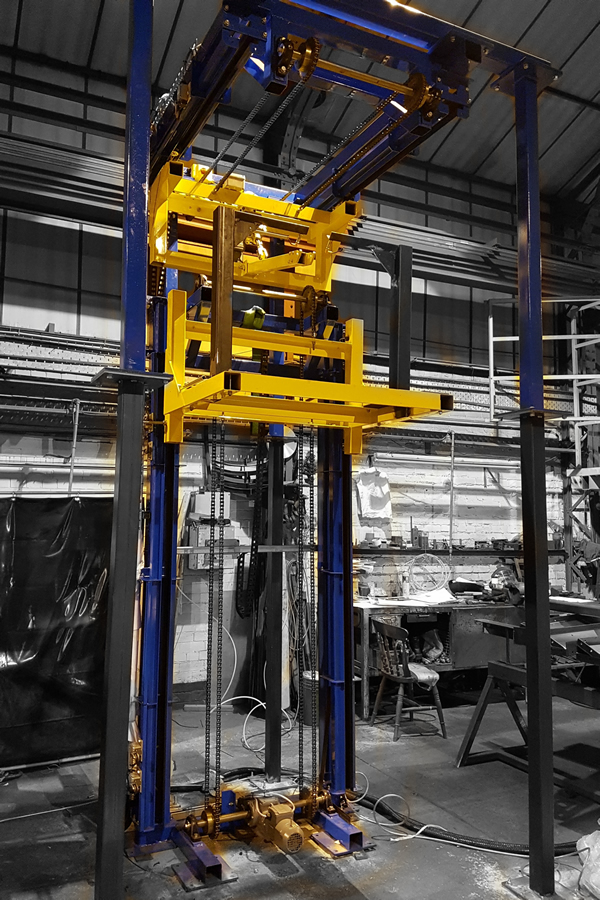London Lift Company: Trusted Specialists for All Your Vertical Transport Requirements
London Lift Company: Trusted Specialists for All Your Vertical Transport Requirements
Blog Article
Looking Into the Globe of Lifts: Usual Concerns Encountered by Different Lift Devices
As we navigate with the vertical transport systems of modern-day buildings, lifts stand apart as a crucial element of our every day lives. Nevertheless, behind their seamless operation exists a globe of intricate systems that can occasionally run into obstacles. From hydraulic lifts to grip systems and machine-room-less designs, each lift kind features its collection of typical concerns. Understanding these challenges is crucial for guaranteeing the smooth performance of these vital systems. Allow's check out the complexities that underlie the operation of elevators and the prospective problems that can develop, clarifying the complex internet of lift devices.
Hydraulic Elevators
Hydraulic lifts, usually preferred for low-rise structures, utilize fluid stress to regulate the movement of the lift automobile (lift repair companies). This mechanism entails a hydraulic pump pushing oil into a cylinder, causing the lift to relocate the wanted direction. While hydraulic elevators are understood for their quiet and smooth operation, they do come with their own collection of common issues
One widespread problem with hydraulic lifts is oil leakage. The seals in the hydraulic system can break in time, causing oil infiltration. This not just develops a mess however can additionally impact the lift's performance if left unaddressed. Furthermore, concerns with the control system, such as damaged valves or a malfunctioning pump, can create interruptions in the elevator's activity.
Normal maintenance and timely repair services are necessary to make sure the smooth functioning of hydraulic lifts. By addressing these common problems proactively, building proprietors can minimize downtime and make sure the safety and performance of their vertical transport system.
Grip Lifts
When considering vertical transport systems in buildings, an additional usual kind in addition to hydraulic elevators is the grip lift. Traction elevators operate making use of a system of ropes and counterweights that relocate the lift cars and truck by grasping onto the hoist ropes. This system permits smoother and much faster upright transport compared to hydraulic systems.
One of the usual concerns faced by traction lifts is rope wear. The consistent motion of the ropes within the traction system can result in tear and use over time, possibly creating the elevator to breakdown or come to be unsafe for use. Regular evaluations and upkeep of the ropes are necessary to make certain the elevator's correct functioning and security.
Another concern that grip elevators might experience is related to the control system. Troubles with the control system can result in issues such as irregular activity, hold-ups in response times, or perhaps total shutdowns. Regular testing and upkeep of the control system are critical to avoid such problems and make sure the lift's dependability.
Machine-Room-Less (MRL) Lifts

One of the vital components of MRL lifts is the small gearless grip maker that is installed within the hoistway. This equipment successfully drives the elevator automobile without the need for bulky tools found in typical traction elevators. In addition, MRL lifts usually use a weight system to balance the auto, further boosting their energy performance.
Despite their advantages, MRL lifts might encounter obstacles connected to repair and maintenance as a result of the confined space for tools installment. Access for servicing components within the shaft can be limited, needing specialized training for professionals. Correct upkeep routines and normal inspections are vital to make sure the ongoing smooth operation of MRL elevators.
Overloading and Weight Restriction Issues
Are elevators outfitted to handle excess weight loads successfully and safely? Overloading and weight limit issues are critical concerns in elevator procedures. Lift suppliers layout raises with details weight abilities to make certain traveler safety and security and tools durability. Exceeding these weight limits can lead to various problems, consisting of mechanical failings, delays, and security hazards.
When lifts are overloaded, it places too much stress on the motor, cables, and other components, potentially creating breakdowns or breakdowns. If they discover excess weight, safety systems such as sensors and overload sensors are in location to prevent lifts from moving. Furthermore, exceeding weight restrictions can result in increased energy intake and deterioration on the lift system.
To alleviate overloading problems, constructing managers need to prominently present weight limits in lifts and educate passengers on the importance of sticking to these constraints - lift repair companies. Routine upkeep checks by certified specialists can additionally help make sure that lifts are operating within secure weight parameters. By attending to click resources overloading and weight limit problems proactively, structure proprietors can enhance lift safety and security and efficiency
Electric System Failings
Exceeding weight restrictions in lifts can not only lead to mechanical issues but also possibly contribute to electric system failings within the lift infrastructure. Electrical system failures are an essential issue in elevator procedure, as they can cause unexpected closures, malfunctions, or also safety and security threats.
Normal maintenance my response and examinations are vital to identify and attend to potential electrical problems promptly, making sure the secure and efficient procedure of lift systems. By adhering to weight restrictions and conducting routine electric system checks, building proprietors can mitigate the danger of electric failings in lifts.
Final Thought

Hydraulic elevators, usually chosen for low-rise buildings, make use of fluid stress to manage the movement of the elevator car.When thinking about vertical transportation systems in structures, another usual type aside from hydraulic lifts is the traction elevator. Grip elevators operate making use of a system of ropes and weights that move the lift cars and truck by grasping onto the hoist ropes. Unlike conventional elevators that need a different machine space to house the tools, MRL elevators incorporate most of the elements within the shaft, removing the requirement for a committed machine space.In verdict, lifts face typical you could look here concerns such as hydraulic malfunctions, traction system failings, and electric system troubles.
Report this page